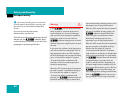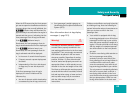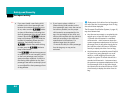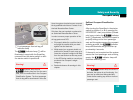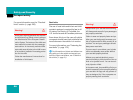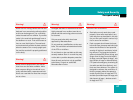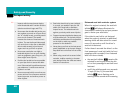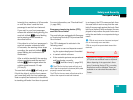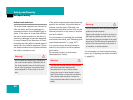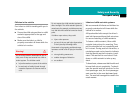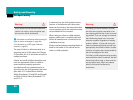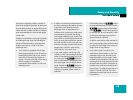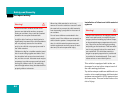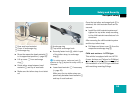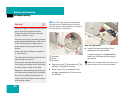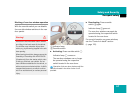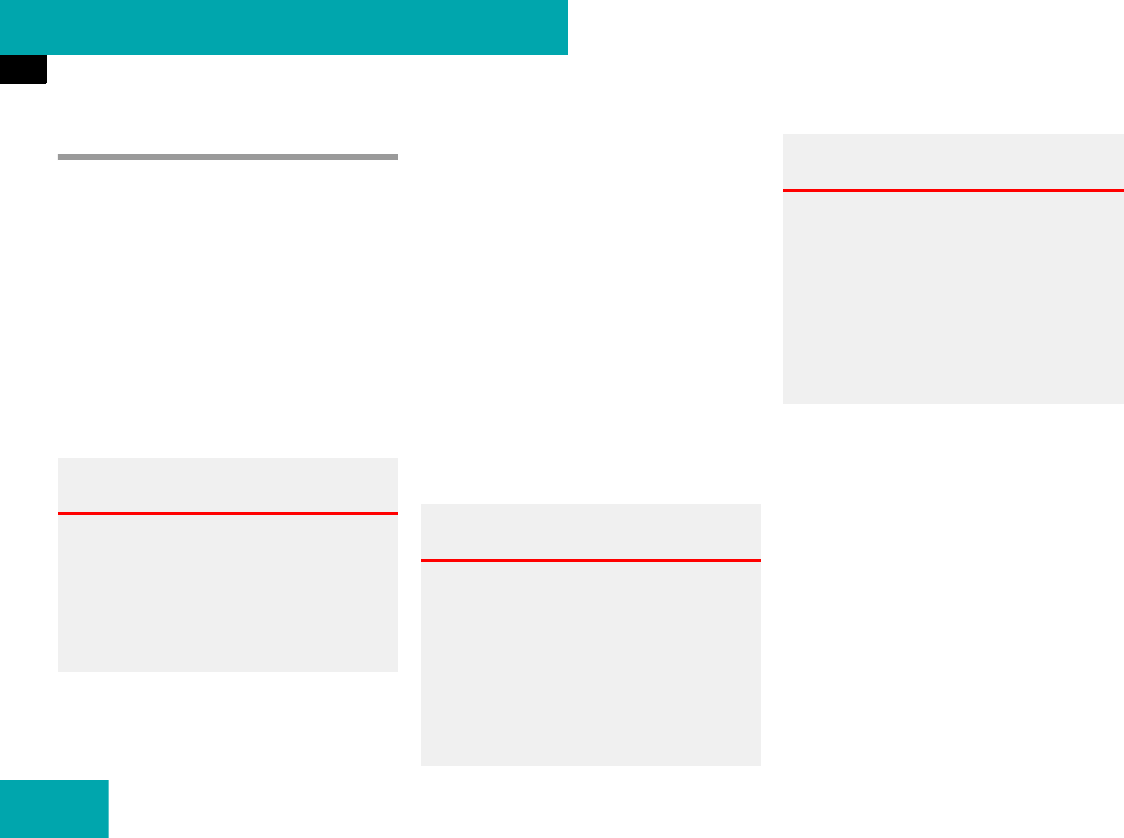
50
Safety and Security
Occupant safety
Active head restraints
The active head restraints are intended to
offer the driver and front passenger in-
creased protection from whiplash type in-
juries. In the event of a rear-end collision,
the active head restraints on the driver’s
and front passenger’s seats are designed
to move forward in the direction of travel,
providing the head with increased support
earlier on in the collision sequence. The ac-
tive head restraints move forward whether
the seat is occupied or not.
If the active head restraints have been trig-
gered in an accident, the active head re-
straints must be reset. Otherwise, the
active head restraints cannot offer any ad-
ditional protection in the event of another
rear-end collision.
For information on resetting the activated
active head restraints, see “Resetting acti-
vated head restraints” (
୴ page 427).
You cannot remove the active head re-
straint on the driver’s and front passen-
ger’s seats.
For removal contact an authorized
Mercedes-Benz Center.
For information on head restraint adjust-
ment, see “Adjusting rear head restraints”
(
୴ page 89).
Warning! G
Do not attach any objects (e.g. hangers) to
the head restraint posts. Otherwise, the ac-
tive head restraints may not function prop-
erly or offer the degree of protection they
were designed for in the event of an acci-
dent.
Warning! G
Only use seat or head restraint covers which
have been tested and approved by
Mercedes-Benz for your vehicle model.
Using other seat or head restraint covers
may interfere with or prevent the activation
of the active head restraints. Contact an
authorized Mercedes-Benz Center for avail-
ability.
Warning! G
For your protection, drive only with properly
positioned head restraints.
Adjust head restraint so that it is as close to
the head as possible and the center of the
head restraint supports the back of the head
at eye level. This will reduce the potential for
injury to the head and neck in the event of
an accident or similar situation.



